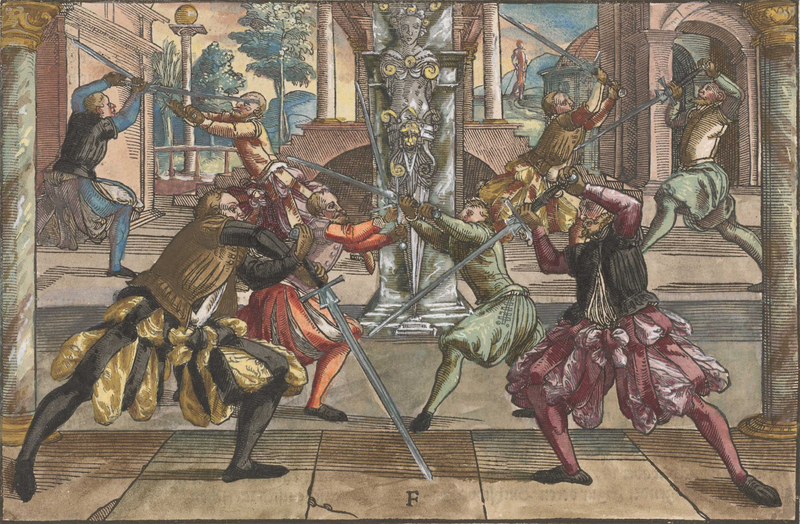In my workout yesterday, in the “lower body” slot where I’d usually do either some type of squat or some type of lunge, I decided to practice stepping for longsword fencing. As soon as I started, I realized there was all sorts of nuance to how to do it, with a lot of details I wasn’t sure of.
I posted a question to the group discord, asking when to pivot the foot. (That is, the front foot is pointed straight ahead and the back foot is turned out 45 to 90 degrees. After you step forward with your back foot it’s easy enough to just put it down pointed straight ahead. But your new back foot needs to turn out at some point.) I also wanted to know whether people did a toe-pivot or a heel-pivot.
A couple of people responded to say that they did toe-pivots, and that they did them at the end, after establishing the new front foot. Good to know.
When I got to today’s class, Christopher Lee French (one of the intermediate HEMA students, but also an instructor in sport fencing at The Point Fencing Club & School of Champaign) gave me a whole master-class in stepping. He made a series of excellent points.

(Let me pause just for a moment here to make it clear that all the following is my understanding informed by what he was telling me. It’s certainly not his fault if I’ve gotten some things wrong here.)
Here’s a short list:
- While you’re stepping, the foot you’re not stepping with has to support all your weight for the whole time your stepping foot is off the ground. (This is true with ordinary walking as well, but in ordinary walking gate you typically straighten and then momentarily lock the knee of your standing leg. Judging from the woodcuts that illustrate Meyer’s treatise, you stand with your front knee bent at nearly 90 degrees, making it a real strength challenge to hold yourself up.)
- You don’t want to push off with your back foot (because that would tend to make you bob up and down). Rather, you want to traction yourself forward with the planted foot.
- Your stepping foot needs to move twice as fast as your body. That is, your body is moving forward one step. But your foot has to go a lot farther in the same amount of time, because it’s also going from being the back foot to the front foot.
- As you step forward, you don’t want to swing your stepping foot out and around. Rather, you want to keep it straight in line with the spot where it’s going to end up. This is it better for a lot of reasons, but one is that it means you’re not telegraphing whether it’s a passing step or a gathering step.
He demonstrated many of these, and his example steps also helped me make sense of the (to me) odd use of a toe-pivot described by others in the discord. He tended to finish a quick step with his back foot not yet pointed out. Instead it was pointed forward, with the heel off the ground. When I asked about why he wasn’t turning it out, he said, “Fix that when you have time.” And the way you’d fix it would be to do a toe pivot, and then put your heel down.
None of this really has much to do with Meyer’s text. That is, I’m not trying to figure out how to step. Rather, I’m thinking about what to train to be able to execute what Meyer’s text documents.
Specificity would suggest that the way to train for fast, smooth, even steps would be a lot of stepping. But I know from experience that it’s always worth breaking these things down and checking to see if any of the pieces is posing a limitation.
To pick a not-so-random example, I’m limited by my leg strength for single-leg standing in a very low stance. Things to train for leg strength with bent knees: wall sits, single-leg wall sits, single-leg standing. Those first two I’ve done before, but I can emphasize them a bit for a while. I can add some bent-knee single-leg standing. And, because specificity is still a thing, I’ll also practice executing passing steps and gathering steps as smoothly and rapidly as possible.